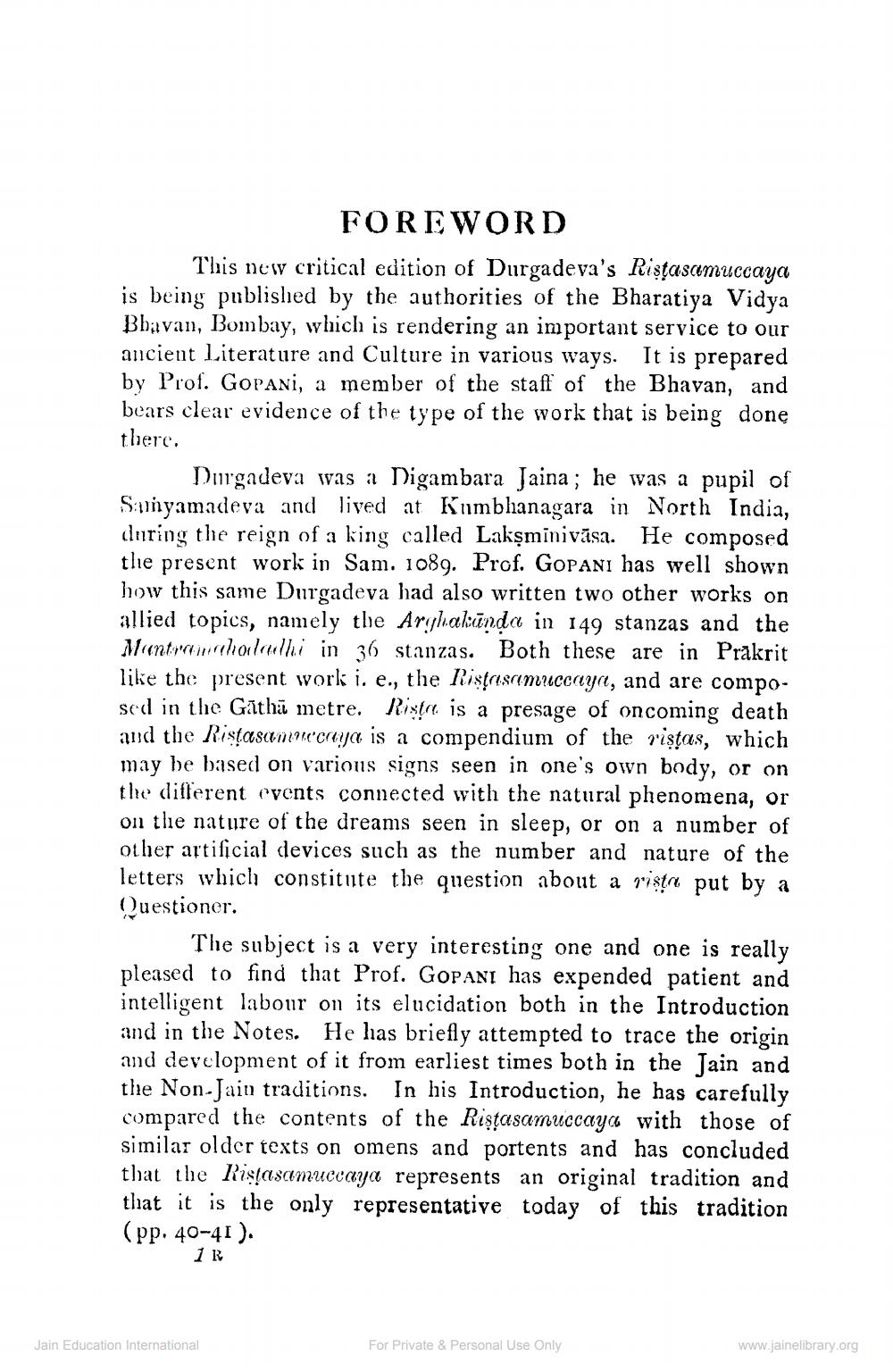________________
FOREWORD This new critical edition of Durgadeya's Ristasamuccaya is being published by the authorities of the Bharatiya Vidya Bhavan, Bombay, which is rendering an important service to our ancient Literature and Culture in various ways. It is prepared by Prof. Gorani, a member of the staff of the Bhavan, and bears clear evidence of the type of the work that is being done there.
Durgadeva was a Digambara Jaina; he was a pupil of Sunyamadeva and lived at Kumbhanagara in North India, during the reign of a king called Lakşminivāsa. He composed tlie present work in Sam. 1089. Prof. GOPANI has well shown how this same Durgadeva had also written two other works on allied topics, namely the Arghakūnda in 149 stanzas and the Mantrabalahi in 36 stanzas. Both these are in Prakrit like the present work i. e., the Ristrusamuccaya, and are compo. sed in the Gathā metre. Ristro is a presage of oncoming death and the Ristasamnecrayja is a compendium of the ristas, which may be based on various signs seen in one's own body, or on the different events connected with the natural phenomena, or on the nature of the dreams seen in sleep, or on a number of other artificial devices such as the number and nature of the letters which constitute the question about a rista put by a Questioner.
The subject is a very interesting one and one is really pleased to find that Prof. GOPANI has expended patient and intelligent labour on its elucidation both in the Introduction and in the Notes. He lias briefly attempted to trace the origin and development of it from earliest times both in the Jain and the Non-Jain traditions. In his Introduction, he has carefully compared the contents of the Ristasamuccayc with those of similar older texts on omens and portents and has concluded that the Risqasamuccaya represents an original tradition and that it is the only representative today of this tradition (pp. 40-41 ).
1 R
Jain Education International
For Private & Personal Use Only
www.jainelibrary.org




